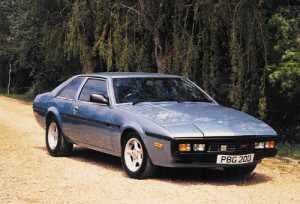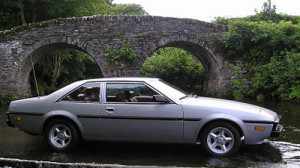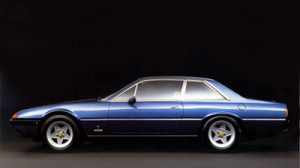This isn’t the normal How Hard Can It Be? It doesn’t talk about a basketcase nightmare of a car that we, with a delusional infusion of cash and imagination, would restore to its alleged former glory. This episode won’t cover some rusty incomplete heap that could only again be a living car through the grace of whatever god to which you happen to pray. In this case the “What if?” is only as far away as your favorite online classified, or maybe your bank manager.
 The conversation began with an online friend posting a link on a vintage BMW email list. There was a Bitter SC Coupe being auctioned on Ebay. Bitters were an interesting piece of 80s kit. The brainchild of Erich Bitter married Opel Senator mechanicals with a luxurious interior, a la Maserati Quattroporte, and Italian-built sheetmetal which stole its visual cues from the Ferrari 365 GTC/4 and 400i.
The conversation began with an online friend posting a link on a vintage BMW email list. There was a Bitter SC Coupe being auctioned on Ebay. Bitters were an interesting piece of 80s kit. The brainchild of Erich Bitter married Opel Senator mechanicals with a luxurious interior, a la Maserati Quattroporte, and Italian-built sheetmetal which stole its visual cues from the Ferrari 365 GTC/4 and 400i.
Bitter SCs were available in coupe, cabriolet, and über-rare four-door sedan configurations. During the heyday of gray-market importation, more than a handful of Bitters made their way to North America. All of them were powered by the larger 3.9-litre inline-six connected to either a GM three-speed autotragic or a Getrag five-speed manual. Performance was about par for the day: Manny-trannies would hit 100 km/h in 7.6 seconds and run into a wall of air at 230 km/h. Autoboxes were slower, most noticeably in the 0-100 km/h race.
 Bitters are neat cars and are not so rare that if you really wanted one you couldn’t trip over a decent example. The drivelines are said to be bulletproof, but body panels and glass are hewn from raw unobtanium. The old axiom of buying the best one you can afford is particularly true here. Bitters are handsome, almost attractive, but not in an 80s-coke-dealer sort of way. Indeed, I don’t remember ever seeing one on Miami Vice.
Bitters are neat cars and are not so rare that if you really wanted one you couldn’t trip over a decent example. The drivelines are said to be bulletproof, but body panels and glass are hewn from raw unobtanium. The old axiom of buying the best one you can afford is particularly true here. Bitters are handsome, almost attractive, but not in an 80s-coke-dealer sort of way. Indeed, I don’t remember ever seeing one on Miami Vice.
Since we were ostensibly chatting about old BMWs, the comment was made the Bitter resembled a 1976-1989 E24 6-Series in concept – grand tourer, German road manners, fat inline-six, 2+2 seating – if not actual execution. Then someone mentioned a point that caused, and continues to cause, a resonance in my automotive reptilian brain.
For the same price as a pristine BMW M6, or possibly two Bitter SCs, you could instead have a decent Ferrari 400i.
 The Ferrari 365 GT4 2+2, 400, 400i, and 412 were produced between 1972 and 1989. Their V12 engines grew over time from 4.4 to 4.9 litres. Weber carburetors gave way to Bosch K-Jetronic fuel injection in 1979. Instead of the classic chrome-gated five-speed manual, you could specify a GM-sourced three-speed autotragic gearbox, but why would you? Interiors were business-like, though well-appointed with lots of yummy Italian leather and a full complement of Veglia-Borletti gauges. You could even put four people in a 400-series car if you really had to.
The Ferrari 365 GT4 2+2, 400, 400i, and 412 were produced between 1972 and 1989. Their V12 engines grew over time from 4.4 to 4.9 litres. Weber carburetors gave way to Bosch K-Jetronic fuel injection in 1979. Instead of the classic chrome-gated five-speed manual, you could specify a GM-sourced three-speed autotragic gearbox, but why would you? Interiors were business-like, though well-appointed with lots of yummy Italian leather and a full complement of Veglia-Borletti gauges. You could even put four people in a 400-series car if you really had to.
Were they pretty? Well, a 400i is certainly more attractive than the 365 GTC/4 that preceded it. Ergonomics? Hey, most of the switchgear are labeled, at least in the later cars. Build quality? Construction and repair considerations? Rust-proofing? These are hand-built Italian cars.
 Hand-built Italian cars with thumping V12s up front, manual transmissions in the middle, and drive wheels out back, right where God and Enzo intended. That’s all you need to know, right?
Hand-built Italian cars with thumping V12s up front, manual transmissions in the middle, and drive wheels out back, right where God and Enzo intended. That’s all you need to know, right?
I’ve been down the Ferrari road several times and have not yet pulled the proverbial trigger. The first time was in the late 1990s, when in San Francisco during the money days you could pick up a nice 308 in any color other than red for US$30,000.
One day I went to look at a black-on-black 1984 308 GTSi at a reputable vintage car dealer. It had some books and records, was straight and shiny and well-sorted, and had the ch’i of an honest car. However, and maybe this is indicative of the breed, everything felt very fragile, like it was going to break off in my hand. The switches were flimsy and the slides very stiff. I didn’t even want to drive it, lest something expensive fall off. I was afraid of this car.
I have never been afraid of any car.
Over the years I’ve thought about a 308 Dino, but most recently I started down the 400i road. I could almost rationalize selling off all the old BMWs, which still wouldn’t get me more than financially half-way. I tell myself we could survive having only one winter car since the Ferrari would dissolve in the Minnesota salt and snow. I am aware that one catastrophic failure would lead me to simply throw the car away in shame.
 But I don’t care. If this were about a sensible decision, I’d just drive our Toyota and be happy about it. Sensible doesn’t actually enter into the lexicon when talking about V12-powered Ferraris on anything less than a seven-figure income. But, as they say, no crusty old codger ever whimsically reminisces to his grandchildren about the Toyota he used to have.
But I don’t care. If this were about a sensible decision, I’d just drive our Toyota and be happy about it. Sensible doesn’t actually enter into the lexicon when talking about V12-powered Ferraris on anything less than a seven-figure income. But, as they say, no crusty old codger ever whimsically reminisces to his grandchildren about the Toyota he used to have.
Ferrari 400i prices hover in the US$25-35k range for a coupe (forget about the convertibles in this price range… there aren’t any) with some history, some maintenance and a manual transmission. I have signed up for a FerrariChat.com account. I scour Ebay and Mobile.de, as well as Hemmings.com and a some less-well-known vintage car dealers’ websites. My wife does not like the 400i – she thinks it’s ugly – but I think if she drove it she’d change her mind. It worked with a cosmetically-challenged BMW 535i we used to own, so there is hope.
We’ve all read that you should own a Ferrari before you die. I want to. I will. Maybe not now, but eventually.


